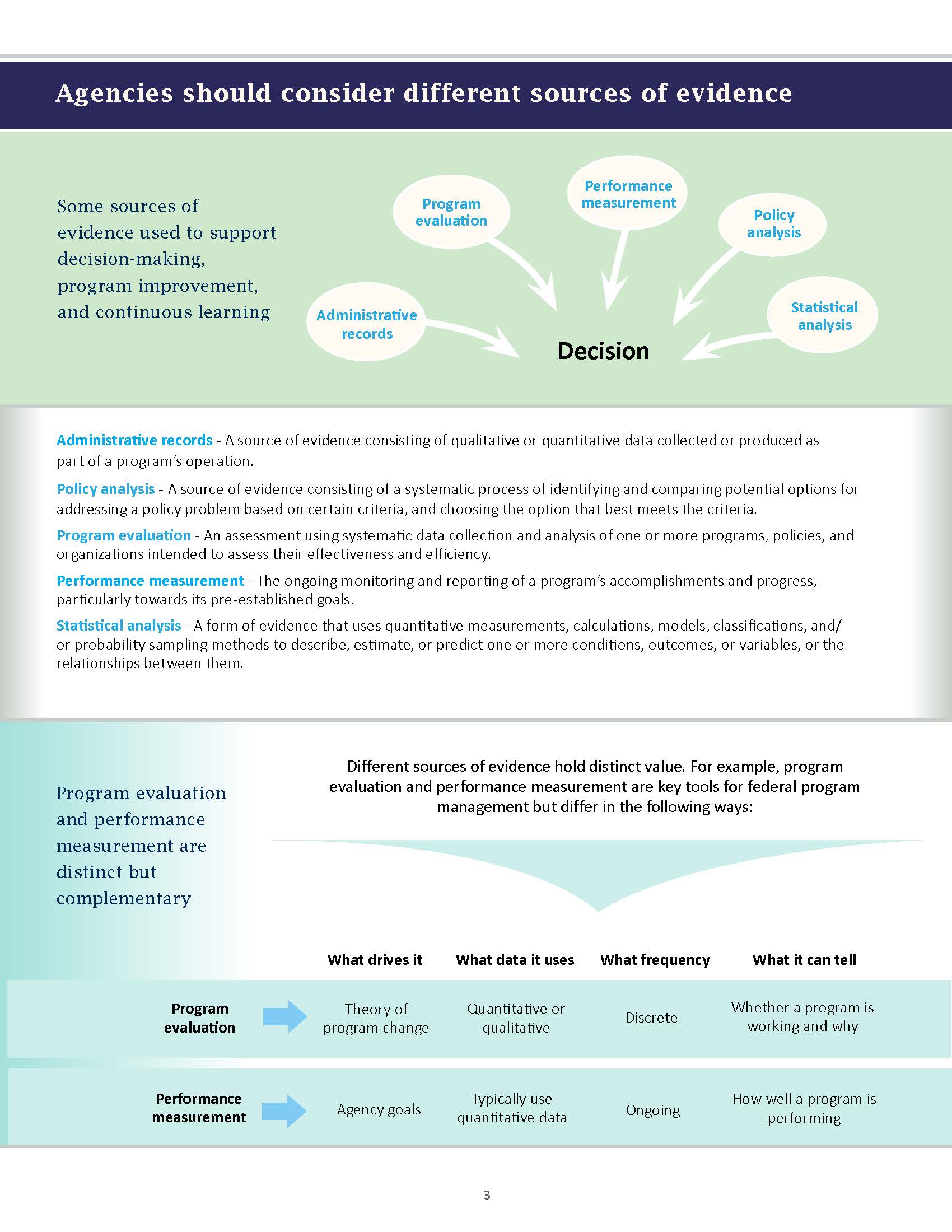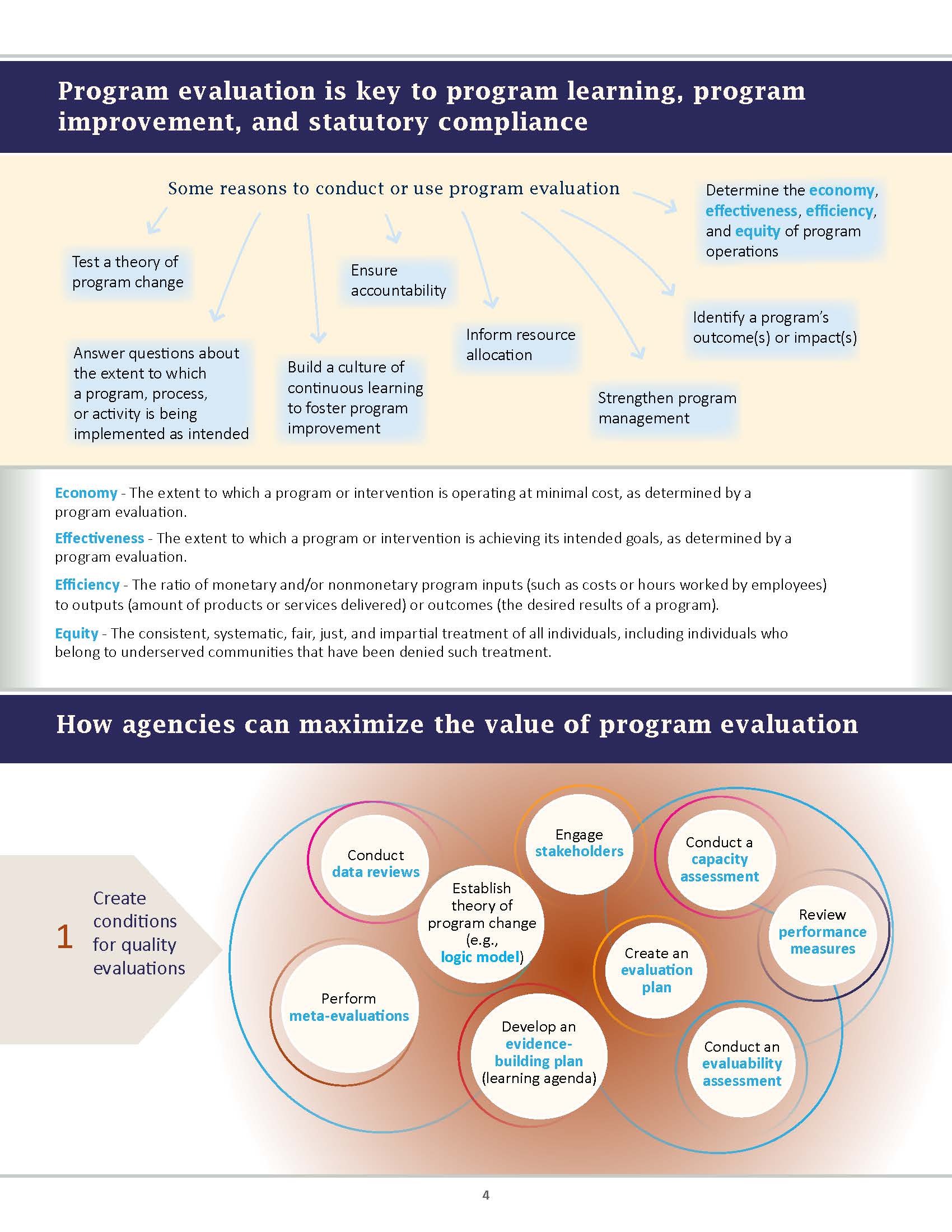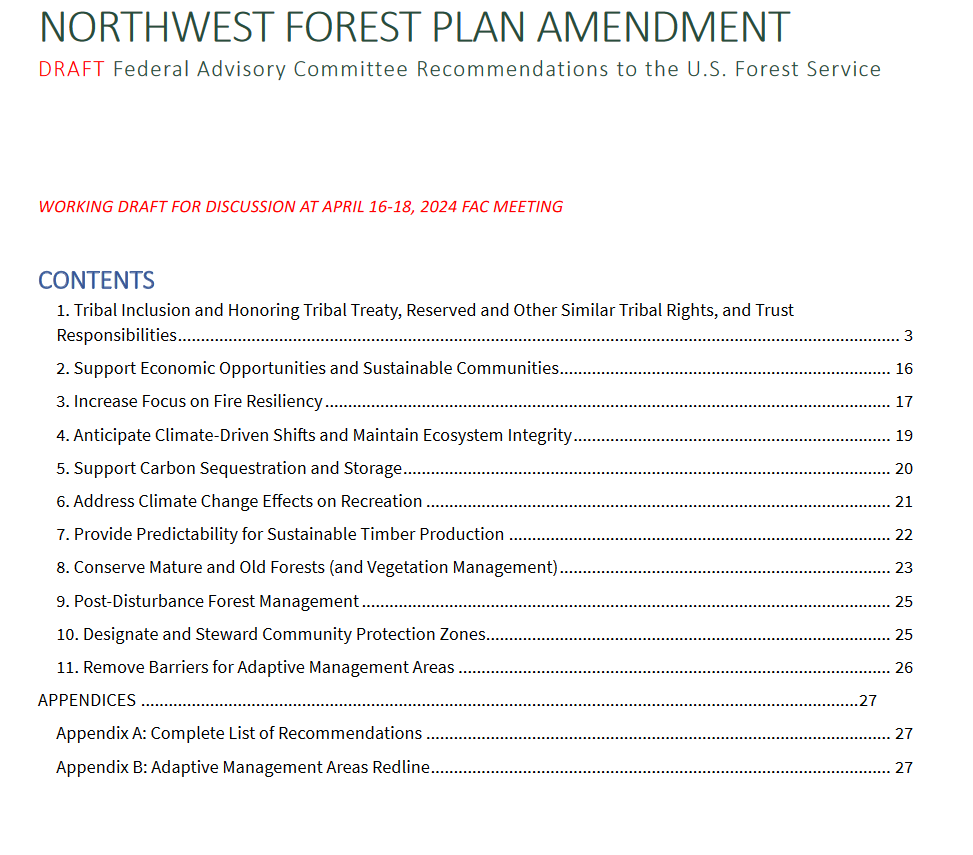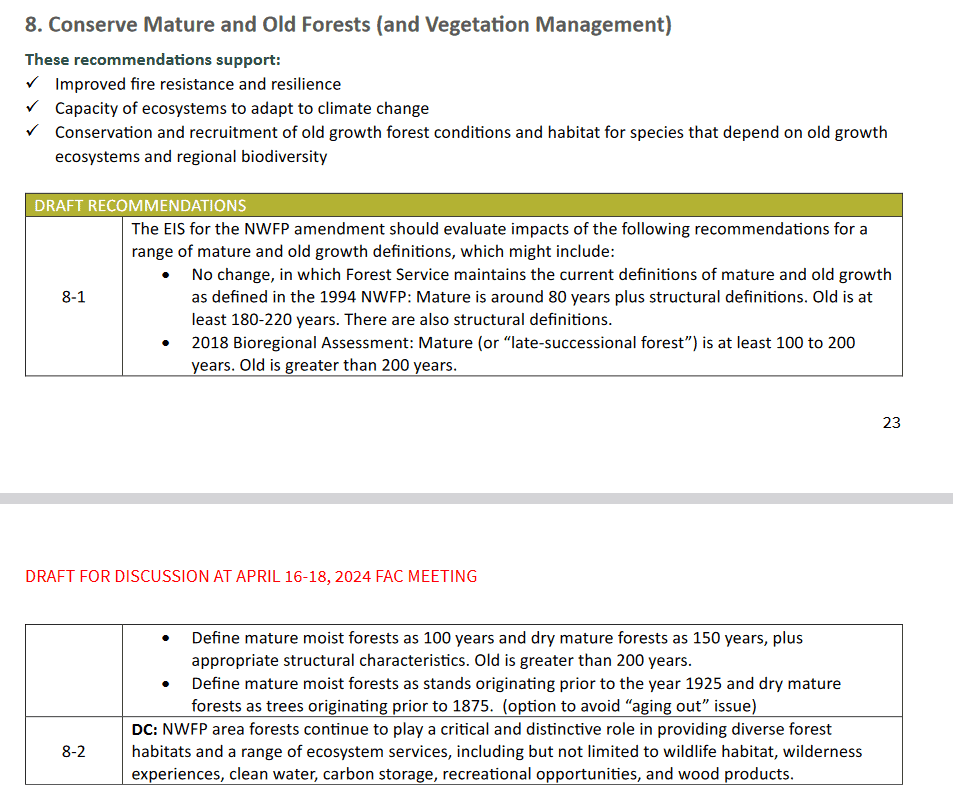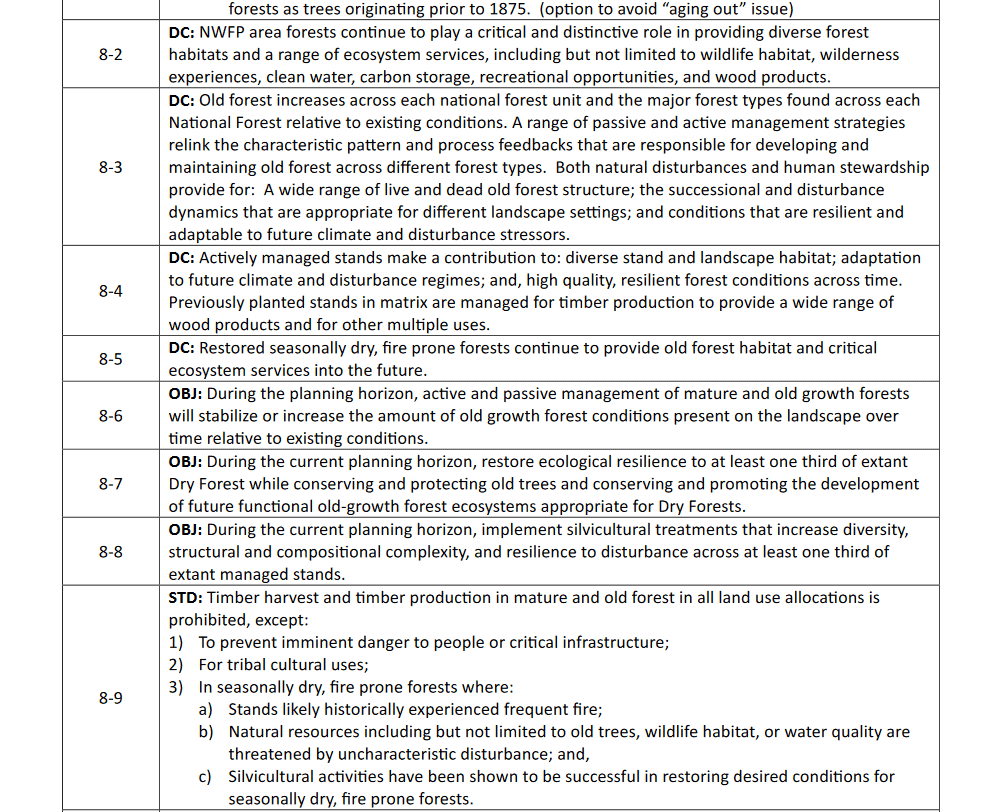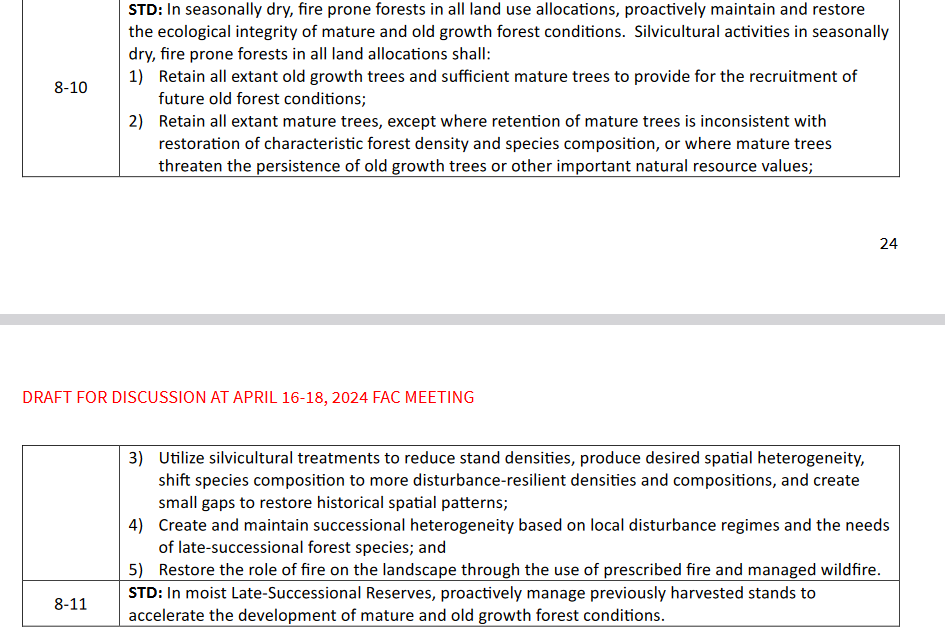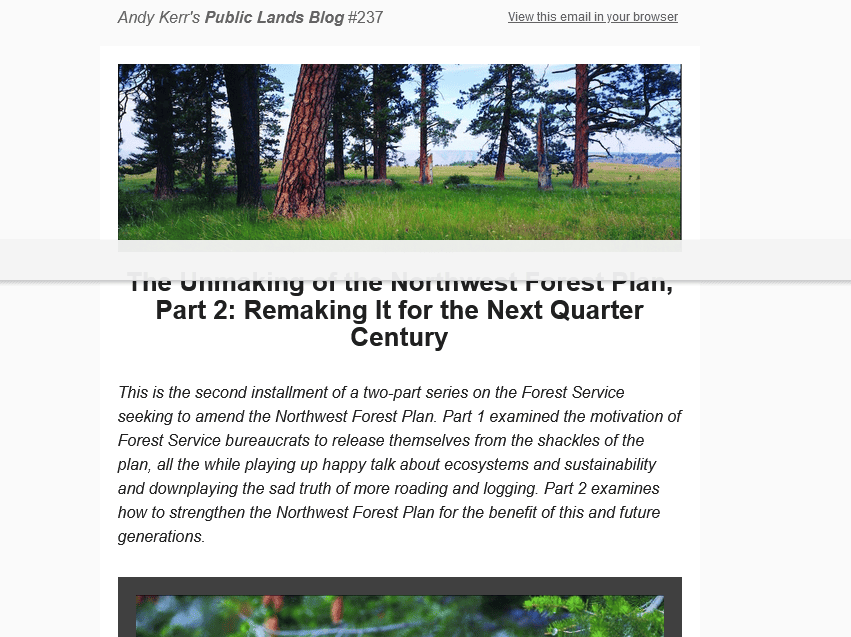SJ and I were having a discussion which I will reproduce here, because it brings up questions beyond the NWFP.
First, I asked these questions.
I would still like to see an independent group examine how well it did on:
1. The social and economic aspects as per principle “ever forget the human and the economic dimensions of these problems,” we know that there were economists involved (with differing opinions) and I wonder how many social scientists were involved. As I recall, Bob Lee, a sociologist, was not a proponent of the approach and it led to a kerfuffle with Charlie Philpot, but I haven’t been able to find copies of the letter exchange, which I think would be useful to future historians.
2. How well did the “government working together” work? The REO.. was it another level of bureaucracy or did it provide value? Has it naturally died out? What happened?
3. Survey and manage pros, cons, was it a good investment, did it add value?
4. Adaptive management areas..the story I heard that was for litigators, cutting trees experimentally was not on the table either.. is that true? What happened that they didn’t apparently work as intended?
5. However many years later, thanks to the NWFP FAC, (even though there are few people from the NWFP terrain on the E side) it is officially recognized that dry forests are different and require different management, and yet many FS people were saying that at the time. Why did it take so long to figure this out? What about SW Oregon? Were regional differences and knowledge adequately considered? To what extent was “the science” Corvallis-centered and has this monopoly been adequately broken up?Why isn’t the FS or BLM or OSU figuring out how to do an independent review of the NWFP?
After all, one of Clinton’s principles was the government should work for us.. the same government that can do an after action review on a vehicle rollover, can’t initiate a review of a much more extensive and expensive process?
It doesn’t make sense, unless powerful entities don’t want to hear what might come up. But all the entities, OSU, FS BLM have a potential COI, so it would be interesting to design a truly independent review.
SJ added links to more information.
The monitoring reports (available here: https://www.fs.usda.gov/r6/reo/monitoring/) and the Science Synthesis (available here: https://www.fs.usda.gov/pnw/pubs/pnw_gtr966.pdf) answer many if not most of your questions.
Another source – perhaps the Cliff Notes version – is the law review article I wrote with Professor Mike Blumm (available here: https://lawcommons.lclark.edu/faculty_articles/146/).
A longer form source is The Making of the Northwest Forest Plan by Franklin, Johnson, and Reeves (available from booksellers).
After examining and reflecting, I thought that perhaps we were talking past each other. I was talking about “how well it worked and what was learned about how we could have done it better (more efficiently, effectively and with fewer negative impacts.” I was basically thinking from the management or public administration perspective.
So I looked up Program Evaluation and it turns out that GAO (the Government Accountability Office) had this interesting report. Check out (3) continuous learning. But as I reviewed this, I thought the NWFP was not alone, there are probably many FS programs that have not had formal program evaluations. Suggestions?
So far it doesn’t appear that the NWFP has had a formal program evaluation, let alone independent external review. It would be a great deal of work but so was (is) the NWFP. Characteristics might include independence, transparency to the public, opportunities for listening to stakeholders. Yes, a program evaluation could become a bureaucratic morass if not carefully designed and implemented, but that could equally be true of the NWFP itself, and how would we know? Finally, I think it was interesting that Colorado and Idaho State Roadless Rules had a national FACA committee to ensure that the national perspective was taken into consideration, apparently this wasn’t thought necessary for NWFP, which covers three states.
